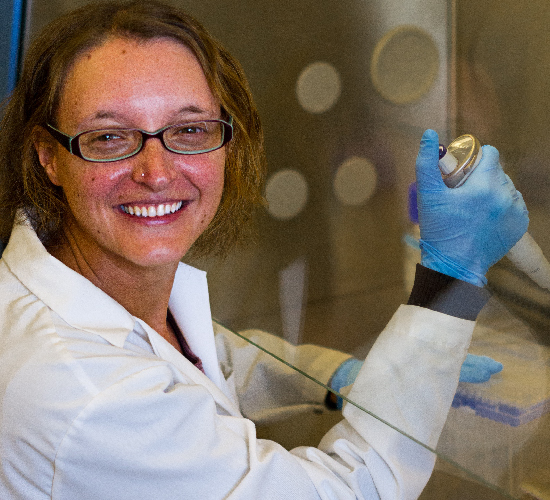What in your life drew you to your current field of study?
Since a very young age, I have always been interested in science and curious in understanding the world that we live in. Until college, I wasn't sure what I wanted to do, except that I wanted to be a researcher. It is only when I discovered genetics and the great diversity of microbes in my Introduction to Biology course that I decided to become a microbiologist.
During my undergraduate degree in Microbiology at Laval University, I took a Food Microbiology course, and I loved it so much that I decided to do a Master's in food microbiology with Dr. Sylvain Moineau at Laval University. I was studying the specificity of phages (viruses of bacteria) infecting the lactic acid bacteria Streptococcus thermophilus, used for the fermentation of milk to produce yogurt and mozzarella cheese.
While focusing on a specific protein involved in the attachment of the phage to its host, I realized that I wanted to have a greater view of viruses in the grand scheme of nature. That is when I decided to do a Ph.D. in Dr Curtis Suttle lab at the University of British Columbia and change my focus from a single virus and its host to whole environmental virus communities. My thesis focused on the diversity and evolution of ssDNA viruses in various marine environments. I developed a method to extract ssDNA from viral communities and used metagenomics to characterize their diversity. I was fascinated by the amazing diversity of marine viruses. From that moment on, I knew I had to keep on studying the ocean.
While I was studying the diversity of viruses, I was getting more and more interested in knowing about their hosts as well. I did my first postdoc at Bigelow Laboratory for Ocean Sciences with Dr. Ramunas Stepanauskas and used single cell genomics to study virus-host interactions. When sequencing single cells, you can sequence everything that is inside a cell, including viral infections! Using single cell genomics, I was able to link uncultivated viruses to their uncultivated hosts.
During my first postdoc, I got to work on samples coming from 3km below the surface of the Earth (from a gold mine in South Africa). I discovered a whole new world: the subsurface! To pursue this new passion, I did a second postdoc at Bigelow Laboratory for Ocean Sciences with Dr. Beth Orcutt. I got to characterize the microbial communities of bacteria that live below the seafloor, in sediment and ocean crust.
Now, as a researcher, I combined all the experience I acquired throughout my studies to study virus-host interactions in aquatic systems (marine and subsurface). My research evolves around the study of the role of viruses in aquatic environments through the characterization of their relationships with their hosts. I use a combination of laboratory cultures, molecular biology techniques, and bioinformatics to:
- Describe and interprete spatial and temporal viral and microbial diversity
- Characterize phage-host interactions of model organisms and in environmental systems
- Understand the mechanisms of evolution of viruses and bacteria in the environment
What do you hope your students gain from studying or working with you?
I want the students to develop good laboratory practices. My lab is certified Biosafety Level 2 and it is important that whoever works in my lab understands what it implies and how everything they do can be a source of contamination. I want my students to have a strong scientific mind where they can design experiments that carry the proper controls and critique scientific papers.
All undergraduate students have to start by doing the basic lab maintenance (cleaning, decontamination, autoclaving, preparing solutions). Once they understand how a microbiology lab works, I assign them to a current project so they get to be challenged, but also understand how it is to do research.
What are you passionate about in your personal life?
I love spending time with my husband, Matthew, and our two lovely labs, Espen and Dalton. I love camping and hiking, as well as discovering my new home state.
I run many times a week and got to run my first marathon this year, the Houston marathon.
